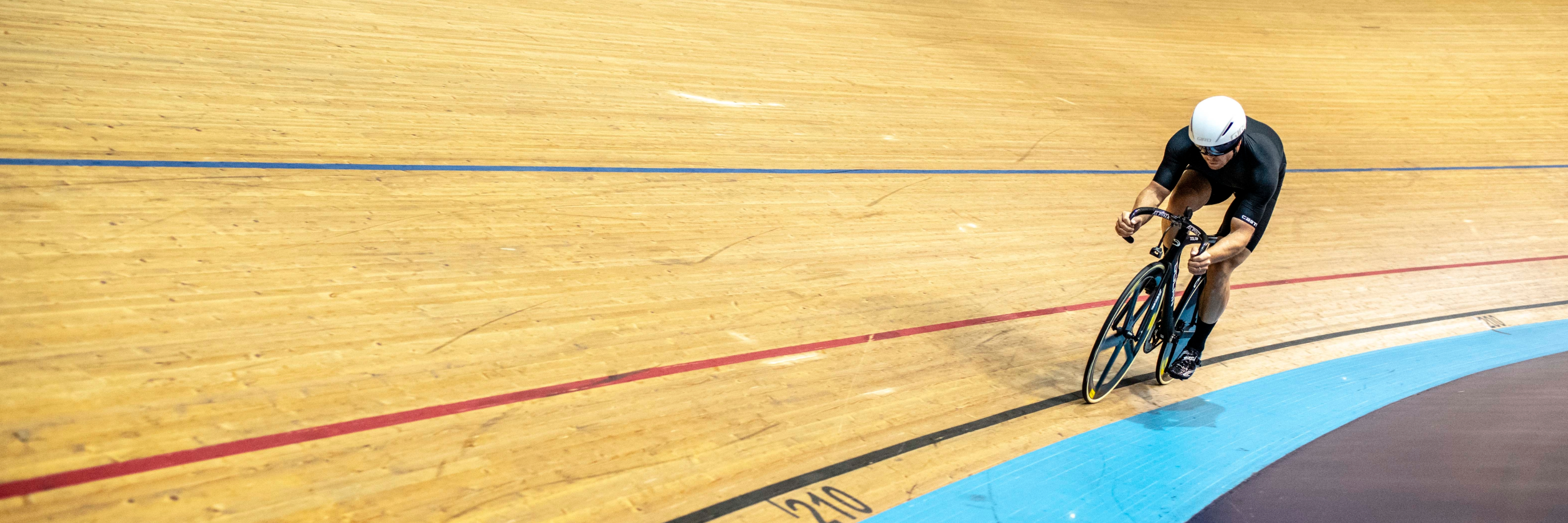David Brailsford’s team at British Cycling famously turned their fortunes around by pursuing marginal gains, right down to the type of mattress the cyclists slept on.
Each change might have an immeasurably small effect on performance, but if you stack enough of these together then you have a chance of becoming measurably faster.
However, most of us have limited resources, so we need to spend what we do have, wisely. This demonstrates how crucial it is to find the best performance-to-cost ratio in order to get the most efficient speed.
So what is the most efficient way to improve performance for the most reasonable budget? How can you go faster for the least amount of cash and effort? Well, for that we need to first look at the science of speed.

Jerukendrup and Martin[1] compare different effects on performance over a simulated 40km time trial, which includes a typical number of hills and changes in wind speed. We look at the effects on their intermediate “trained” rider, with a baseline time trial time of 58:35.
Training is the obvious way to improve. But that means a good variety of regimes and focus points.
They found that for a well-trained cyclist, replacing some of their training with high-intensity exercise for 6 weeks improved their time by an average of 1:45.
Weight Reduction
The next thing people tend to look at is bike weight. Reducing the weight of the bike from 10kg to 7kg reduces the time by just 7 seconds. But this makes sense as on the flat, the effect of weight is minimal. A typical time trial course is not hilly, so weight is not a powerful driver of performance.
By comparison, cycling 20km up a 6% grade with the same weight reduction reduces time by 1:52. So, weight is not insignificant, just highly dependent on the type of riding. Another benefit you can reap from ditching weight is that typically, you can expect to spend $1200 per kg of reduction.
Next comes aerodynamics…
Aerodynamics is part of the science of speed that deals with the motion of air and the forces acting upon bodies in motion relative to it. It’s closely related to fluid dynamics (the study of liquids in motion) and gas dynamics (the study of gases in motion).
The term “aerodynamics” was coined by Greek philosopher Aristotle in around 350 BCE to explain how falling bodies accelerate as they travel through the air.
Since then, the science has evolved considerably, and now aerodynamic principles are applied not only to falling objects but also to everything from cars and bicycles to airplanes and rockets.
Cycling in any form means overcoming wind resistance. When we think about bikes in the traditional sense, they make the rider sit upright with very poor aerodynamics – not really giving anyone the best chance at maximising speed or efficiency. While newer recreational bikes are being more considerate with this design, professional equipment continues to take the science of speed further.
This is where aerodynamics comes in. In order to counteract the added weight and drag, engineers focus on making the frame and riders as aerodynamic as possible. This means that they need to be able to cut through the air with as little resistance as possible – kind of like a bullet.
The benefits of an aerodynamic bike are twofold: firstly, the bike is faster; and secondly, the rider uses less energy to maintain the same speed.
This is a crucial advantage in professional cycling where races can be won and lost by seconds, and riders need to conserve as much energy as possible over the course of several hours.
Wheels
Compared to a standard set of round-wire spoked wheels, a set of aerodynamic wheels was shown to reduce the time by 1:07. That’s a significant difference, and it’s the kind of advantage that could make all the difference in a race.
Aero wheels cost can vary enormously, but typically would be around £2400.
Frames
A typical aerodynamic bike frame compared to a standard round-tube frame was shown to save around 1:26. This is one of the biggest performance differences that you can make to a bike without changing the rider.
Rider Position
However, the biggest aerodynamic effect by far is in the rider position. A rider who is able to tuck into a low and aerodynamic position will be able to shave off valuable time.
By comparison, moving from drops to aerobars decreases the time by 2:30, and moving to the hoods result in a further reduction of 3:30.
To put it another way, one of the most efficient ways to utilise the science of speed and go faster on the bike is to refine your body position. This is around 2.5 times more effective than buying a set of aero wheels, and for substantially less cost.
Here is a summary of the effect on a typical 40km time trial time, starting from 58:35 baseline, in order of significance:
| 3kg weight reduction | 0:07 |
| Aero wheels | 1:07 |
| Aero bike | 1:26 |
| 6 weeks HIT training | 1:45 |
| Body position refinement (drops) | 2:30 |
| Body position refinement (hoods) | 3:30 |
Wind tunnel use typically costs $750 per session - the major advantage of aerosensor economically is the one-time cost for unlimited test sessions!
The road becomes your wind tunnel, with aerobody as your virtual coach.
Incorporate aerodynamic testing into every ride: get aero, stay aero.
